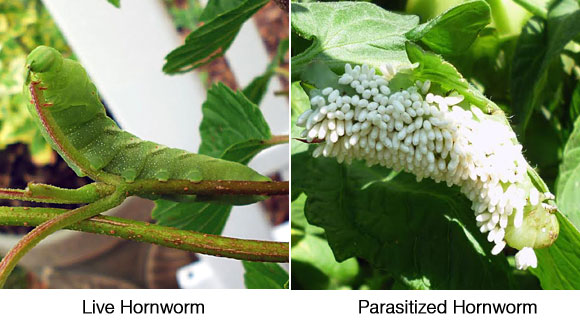It’s been a long hard fight, but by now most of us have managed to get our vegetable plants in the ground, our flower beds landscaped and planted, and maybe even designed a patio pot or two. But the battle isn’t over and pest control Brisbane is the best ally you can have. The insects this year seem to be hungrier and in greater numbers than last year. Finding a newly planted row of marigolds stripped of their leaves, or new seedlings chopped off at ground level is heart-breaking.
The two most common types of insect damage are chewing damage and sucking injury.
Symptoms of chewing injury include ragged leaves, holes in wood, bark, or fruit, wilted or dead plant parts. Cabbageworms, cutworms, grasshoppers, some beetles, weevils, and sawflies produce this type of damage.
Sucking injuries are the result of the insect piercing the plant and sucking the sap and cell contents. This causes off-color foliage, white or brown splotches on leaves, curled or misshapen foliage, general wilting, or death of the plant. Aphids, scales, plant bugs, squash bugs, leafhoppers and spider mites are some of the culprits in this type of damage.
So, who are some of the main culprits so far this season? How can we cope with these pests in a natural and environmentally-friendly way?

MICE. As the winter goes away, this pest becomes more and more prevalent. Mice are hardened survivors, and as such can and will eat anything without much consequence to itself. As such, your garden can be in peril. Unfortunately that is not nearly the end of it. The best option is to contact a pest control company to help with this problem. It could render your garden unsafe and disease ridden, not to mention these buggers might not stop at chewing up your garden and move on to see what they can find in your home. If you see one, or evidence of one or more in the premises, I suggest you contact mice extermination services. By showing the garden to them they can use chemicals that are safe and will not harm it, while still solving the problem quickly and effectively for you. The experienced and professional team of specialists at pest control Noosa can take on all your pest control needs from inspections to elimination with safe chemicals and a range of scientifically proven approaches.
SLUGS. Hostas, tender seedlings, just about anything other than herbs are fair game for the slimy critters who feed on our gardens at night. Head out to the garden after dark to confirm that this is what’s eating your plants. Traps and barriers are the best defense against slugs. Flat dishes filled with beer will attract and drown them. Course sand or diatomaceous earth sprinkled around each plant will deter these soft-bodied creatures. Keep the area around your flower beds clear of hiding places, as well.
EARWIG nymphs. These tiny gray “infants” burrow under the soil surface, coming out to feed during the night. They can skeletonize marigolds and other tender young seedlings in one night. The only way to identify them for sure is to go out with your flashlight after dark. Traps of newspapers or cardboard can be placed around your beds. Collect and destroy the insects each day.
LEAF MINERS. Classic wiggly white or yellow lines on leaves indicate the presence of leaf miners. These are the larvae of several types of flies and moths. The larvae tunnel between the layers of the leaf surfaces, and if the infestation is severe enough, the leaves will die. Columbine is especially vulnerable to leaf miner activity. Leaf miners can be controlled and eliminated by the use of beneficial insects or neem oil. The beneficials are the most efficient method; neem oil must be sprayed directly on the flies or moths, thereby breaking the egg-laying cycle.
SAWFLIES. The culprit is not the fly, but the larvae. Several types of sawflies do considerable damage to shrubs and perennials. Of serious concern are “rose slugs” and pear sawflies. The rose slug will defoliate a rose bush overnight. The “slugs” are tiny pale green worms on the undersides of the leaves. You won’t know you have a problem until you see a laciness to a leaf. Turn the leaf over – you’ll seed dozens of tiny worms. Speed is of the essence to save roses infested with these pests. Pear sawflies are also a serious invader of mountain ash, hawthorn, cotoneaster, flowering cherry, flowering plum and pear. A large infestation can reduce the tree to nothing but branches. On small plants and shrubs, the larvae can be washed off with a strong spray of water, or use neem oil or insecticidal soap to kill them. Dust the ground with diatomaceous earth to kill any remaining larvae.
PLANT BUGS. These nasty sucking critters damage the leaves, reducing the plant’s ability for photosynthesis. Without it, an infested plant will die. Four-lined plant bugs are distinctive, but you might never see them and they are too fast to hand-pick. Neem oil or insecticidal soap is effective.

LILY LEAF BEETLES. The bane of the lily lover’s life! These attractive quarter-inch bright orange beetles favor Oriental and Asiatic lilies, but won’t touch daylilies. The beetle adult shows up in early May here in Connecticut and begins feeding on the leaves. Shortly thereafter, she lays bright orange eggs on the underside of the leaves. The eggs hatch and the larvae proceed to decimate the entire plant – leaves and buds. The larvae cover themselves with their own excrement to ward off predators. At the first sighting of an adult, hand-pick and destroy any you find. Check each plant, especially under the leaves. Check every day. If you find any globs of orange eggs, squash them. If you find black globs of goo, wipe them off with a tissue and destroy.
JAPANESE BEETLES. For the next six to eight weeks, these horrible critters will be emerging and trying to devour everything in sight. They are quite distinctive with their metallic green bodies. Due to their sheer numbers, these beetles will destroy whatever they choose to use for food. Some plants they tend to avoid include most evergreens, dogwood, holly, lilacs, and rhododendrons. All the documentation stresses killing the grubs to reduce the adult populations. University of Connecticut recommends application of grub killer in late summer after the beetles have deposited their eggs just under the surface of the lawn. This system kills the larvae before they can burrow deeper and overwinter.
But to handle the current beetles on your shrubs and trees, try hand-picking them as early as you begin seeing them. Each one you destroy is one less batch of eggs to be laid. Some vulnerable shrubs and plants can be protected with cheesecloth until the main feeding frenzy is over. Avoid using beetle traps. These use a sex scent that attracts the beetles. Sure, they fall into the bag, but the scent also attracts beetles from far away. Neem oil can also be used effectively on plants that are infested. The beetles are most active at temperatures over 85 degrees Fahrenheit with still air.
Tomato or Tobacco HORNWORMS. Ick! These fat green caterpillars will destroy not only tomato plants, but also Viburnum and other related plants. When small, they are very hard to see, but watch for leaves with large notches, or stems with no leaves. Then carefully go through the branches until you find the culprit. Hand-pick and destroy. If you are lucky, the native parasitic wasps will find these caterpillars and do the job for you.

 This article and photographs were provided by Toni Leland, a Connecticut freelance writer and Master Gardener in southeastern Connecticut. She is available for assignment on a wide range of subjects: travel, history, nature, gardening, wildlife, cooking, writing, horses, and outdoor living to name a few.
This article and photographs were provided by Toni Leland, a Connecticut freelance writer and Master Gardener in southeastern Connecticut. She is available for assignment on a wide range of subjects: travel, history, nature, gardening, wildlife, cooking, writing, horses, and outdoor living to name a few.
Toni’s fiction has appeared in several anthologies, magazines, and various writing newsletters,and she keeps up with the writing community through her Facebook page, as well as membership in Sisters In Crime and Connecticut Authors and Publishers Association.
Visit her website www.tonileland.com and contact her by email for further information.

